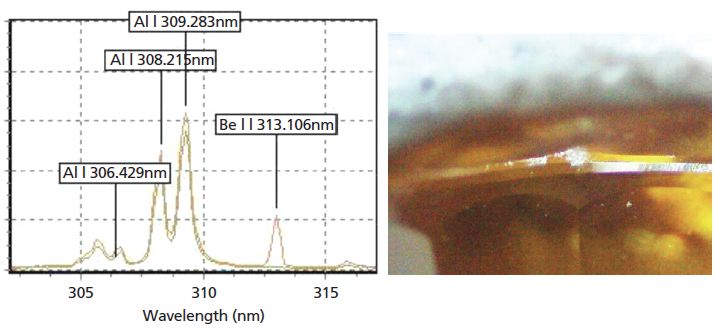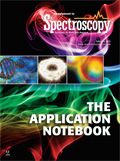Applications in Gemology Using the TSI LIBS Desktop Analyzer
Application Notebook
The TSI® LIBS Desktop Analyzer laser induced breakdown spectroscopy (LIBS) instrument allows simultaneous determination of all detectable elements present in the material being analyzed.
The TSI® LIBS Desktop Analyzer laser induced breakdown spectroscopy (LIBS) instrument allows simultaneous determination of all detectable elements present in the material being analyzed. In LIBS, a laser pulse is used to form a small high-temperature and highly-electric field region on the sample surface. A portion of the sample is vaporized during the laser pulse, forming electronically excited atomic species under the plasma conditions formed at the surface. Fluorescence from the plasma is resolved using optical spectrographs to yield the elemental composition of the material.
To overcome these challenges and achieve simultaneous elemental analysis, the TSI LIBS Desktop Analyzer uses a patented multiple spectrograph, and a synchronous, multiple CCD spectral acquisition system. Typically, four high-resolution spectrographs are used to observe fluorescence from the ultraviolet to infrared spectral region (190–950 nm). Each spectrograph and detector has its own analysis electronics triggered synchronously with the laser so that the entire spectral range is captured in a single laser pulse.
Traditionally, the relative intensity of observed spectral lines is used to calculate elemental concentrations by comparison with standards. This has been a successful approach in analyzing many material types including a diverse range of mineral ores, industrial, and biomedical products (1,2).

Gemology Instrumentation
In gemology, the TSI LIBS Desktop Analyzer has been used to aid gemologists in gemstone classification. TSI's UV laser produces a small focal point on the gemstone and is only absorbed at its very surface, thereby producing an inconsequentially small area of laser damage.
The result is minimal gem damage during the analysis process, such as the laser mark shown at right on the girdle of a sapphire (at 200× magnification). This particular laser crater is approximately 50 μm in diameter and was a result of five laser pulses at full laser power. Using one laser pulse an operator can reduce the laser mark to virtually imperceptible levels.
Applications of the instrument in gemology are widespread. For example, the identification of beryllium treated sapphire (left) is easily accomplished with the TSI LIBS Desktop Analyzer by qualitative examination of the distinctive Be emissionat 313.106 nm.
Another gemology application of the TSI LIBS Desktop Analyzer is the identification of coated gemstones. For example, cobalt coating of natural topaz is a means of changing the color of the stone. Shown right is the comparison of natural and coated topaz where the difference is quite distinctive.

Click here to view full-size graphic
In addition to qualitative comparisons such as these, quantitative elemental analysis can also be achieved via calibration with standard materials. This has been a widely reported approach used in the analysis of a broad range of material types in solid, liquid, and even gaseous form. An alternative method of calibration is to use predictive spectral modeling to calculate the elemental component concentrations. The model uses a database of atomic emission lines to create a theoretical emission spectrum for selected elements using defined plasma parameters. The resulting theoretical spectrum is fitted to experimental data obtained from the TSI LIBS Desktop Analyzer. Good agreement has been obtained between predicted and certified values of elemental compositions in a variety of matrices, including metals and mineral ores (3).
References
(1) D.A. Rusak, B.C. Castle, B.W. Smith, and J.D. Winefordner, "Fundamentals and applications of laser-induced breakdown spectroscopy," Crit. Rev. Anal. Chem. 27(4), 257–290 (1997).
(2) I. Ahmed and B.J. Goddard, "An overview of laser induced breakdown spectroscopy, J. Fizik Malaysia," 14, 43–54, (1993).
(3) P. Yaroshchyk, D. Body, R.J.S. Morrison, and B.L. Chadwick, "A semi-quantitative standard-less analysis method for laser-induced breakdown spectroscopy," Spectrochimica Acta Part B 61, 200–209, (2006).
TSI, Inc.
500 Cardigan Rd., Shoreview, MN 55126
tel. (800) 874-2811
Website: www.tsi.com
